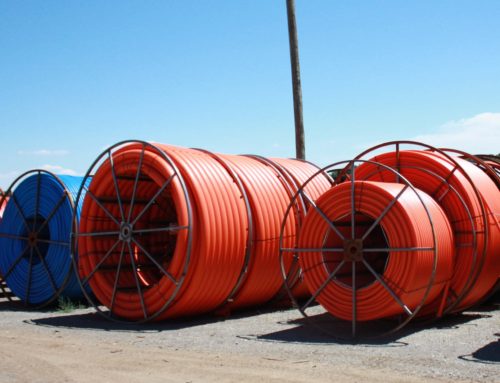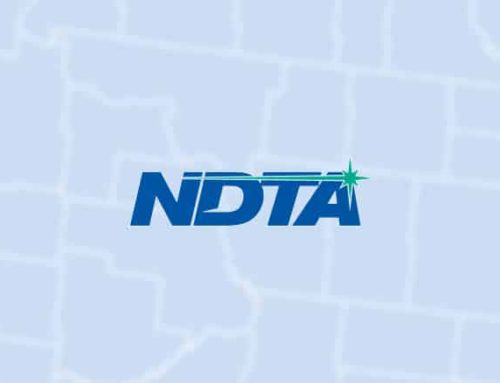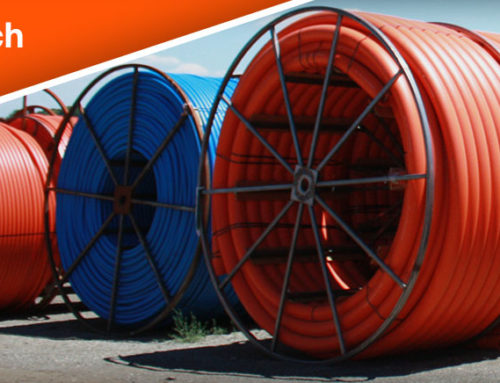Below is a list of common terminology that we use in our industry as an HDPE Pipe manufacturer.
Aerial
Aerial conduit provides an efficient means of supporting and protecting cable. The applications for aerial conduit include road crossings, rail crossings, trolley line crossings, and water crossings.
ASTM F2160
Solid-wall high-density polyethylene (HDPE) conduit based on controlled outside diameter (OD).
Backbone
A network backbone connects multiple networks together, allowing them to communicate with each other.
Backfilling
Is soil that is free of large rocks or clumps that is placed directly on and around the conduit to a height of 6 inches over the conduit crown.
Bend Radius
Bend Radius is the radius the conduit can be bent without mechanically degrading the performance of the conduit.
CATV
Cable television service that is typically offered through coaxial or fiber cable to provide service delivered from satellite headend.
Cable in Conduit (CIC)
CIC is conduit with cable factory-installed providing time and labor savings. Cable in conduit can be provided with fiber, coaxial, twisted pair, and electrical power cables already installed. Conduit is offered with the requested cable type preinstalled.
Coax Cable
Cable used in the cable TV industry for TV or data transmission.
Conduit
Plastic pipe used to protect fiber, power to coax cable. Also, known as duct.
Dark Fiber
Dark Fiber is an unused fiber-optic cable. To prepare for future needs, companies may lay more fiber or conduit than what is immediately needed.
Direct Buried
A traditional construction method of placing cable or conduit into the ground.
Direct Plow
Is using a plow blade to cut a furrow in the earth and place the conduit at the required depth through the plow’s chute.
Drilling Mud
Drilling mud is injected into the bore during cutting and reaming to stabilize the hole and remove soil cutting. It can be made from clay or polymers. The primary clay for drilling mud is sodium montmorillonite (bentonite).
Environmental Stress Crack (ESCR)
ESCR is the measure of long-term resistance to cracking.
Fiber Optic Cable
Is a high-speed data transmission medium that contains tiny glass or plastic filaments that carry light beams.
Fiber to the Home (FTTH)
Broadband network architecture using optical fiber to provide all or part of the local distribution network used for connections directed to the subscriber.
High Density Polyethylene (HDPE)
Is a durable plastic material used to manufacture conduit.
Horizontal Directional Drilling (HDD)
A construction method of placing conduit by drilling horizontally with a steel threaded drill string that has the capabilities to change directions and can guide through underground obstacles.
Innerduct
A smaller duct used to subdivide a larger duct.
Impact Resistance
Impact resistance is the conduits ability to absorb impact and resist cracking during installation, particularly in cold weather. One of the advantages of HDPE vs other materials is its ductility at low temperatures.
Inside Diameter (ID)
The inside diameter of the conduit.
Inside Plant (ISP)
Communication and electrical substructure in a building.
Locatable Conduit
The conduit has a copper wire extruded on the outside or within the conduit wall making it locatable. When digging needs to be done within the area, as the operator walks above the buried conduit using a location instrument, a signal is detected.
NEMA TC7
Smooth-wall coilable polyethylene electric plastic conduit.
Outside Diameter (OD)
The outside diameter of the conduit.
Outside Plant (OSP)
Communication or power cable providing date or power distribution system through underground (buried) or above ground (aerial).
Pull Tape or Mule Tape
A polymer flat woven tape or rope that is typically made of polyester or polypropylene strands placed inside the conduit. This is used to pull cable into the conduit. It can be pre-installed during the manufacturing of pipe or inserted in the field.
Pullback
Pullback during the boring process is the pulling of the entire pipeline length in one segment back through the drilling mud along the reamed-hole pathway. Pullback speeds range between 1 to 2 feet per minute.
Reaming or Backreaming
The process of enlarging the borehole size enough to allow for the pullback of conduit or conduits.
Slow Crack Growth
A potential long-term brittle failure mode of polyethylene conduit under stress.
Standard Dimension Ratio (SDR)
Is the ratio of the average outer diameter to the minimum wall thickness. The higher the number the thinner the wall thickness.
Standard Inside Dimension Ratio (SIDR)
Is the inside diameter of the pipe divided by the wall thickness. The higher the number the thinner the wall thickness.
Tensile Strength
Is the point at which stress causes a material to deform beyond its elastic region. Tensile strength is an important property for many installation methods involving pulling such as directional boring.
Open Trench
Digging an open trench by using a backhoe then laying the conduit directly into the trench then placing an initial cover using embedment material.





